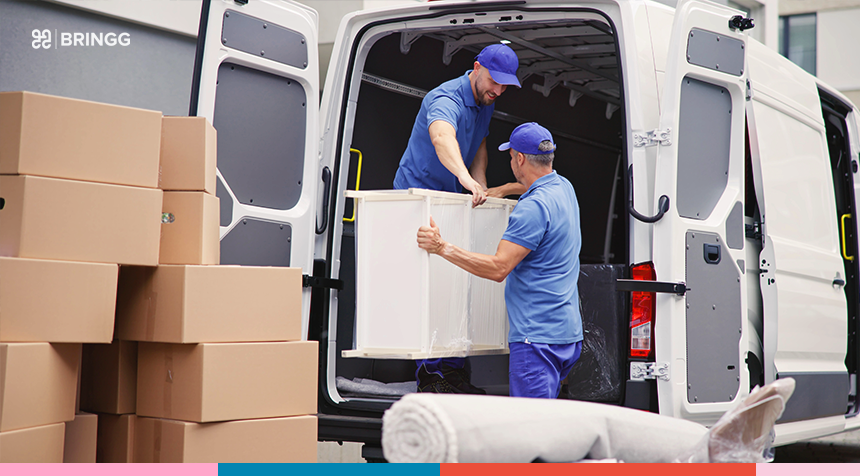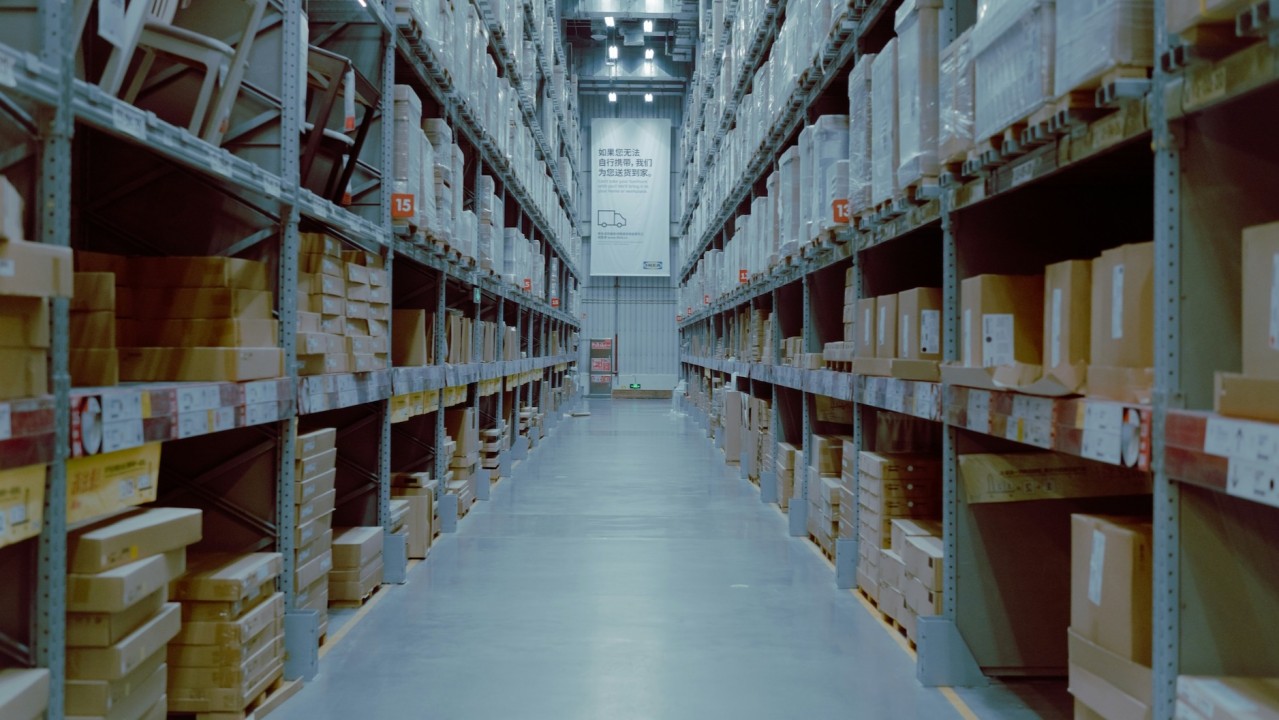Big and bulky (B&B) items are some of the most lucrative to sell — and the most difficult to deliver.
Their size, weight, and shape make them troublesome to store, load, transport, and unload. And despite their large dimensions, they can be surprisingly fragile and prone to damage. They represent a big investment for customers, who won’t appreciate dents in their new appliance or a broken bit of machinery.
What’s more, many customers now expect free shipping on B&B items — which means the margin for error is razor-thin.
To help companies meet these challenges, we’ve compiled a quick guide of five actionable steps you can start using today to simplify B&B delivery. Your customers will enjoy a better delivery experience, and you’ll reap the benefits of greater cost-effectiveness, fewer returns, and better margins.
Roadblocks in Big and Bulky Delivery
Delivering large, bulky goods involves meeting several challenges that impact both customers and your business. These include:
Big and bulky items are more difficult to load, unload, and transload
- Their dimensions make it more challenging to use all available cargo space (“cubing out”) efficiently. Plus, they may require more labor force or specialized equipment, such as motorized dollies, to move them safely.
- Loading and unloading in urban areas or locations with limited access is all the more difficult with heavy and awkward packages, especially if additional equipment is needed to do so.
- These challenges mean higher costs, more dead space, and a greater risk of injury to handlers.
Logistics are complicated by inventory, distance to customer, and number of steps
- Large merchandise is often not stocked in retail stores, which means it must be sourced from warehouses, often far from customers.
- Big parcels often have complex delivery journeys with multiple legs, and these challenges grow each time a B&B item must be transloaded.
Last-mile and hand-off are more complex and costly
- These products often need professional installation or assembly. Installers must either travel with the product or arrive at the same time; in either case, the logistics are challenging.
- Likewise, big products require scheduling and close coordination with customers and installation services, unlike smaller items that can be dropped off anytime.
- Nearly two-thirds of global consumers prefer free delivery, but the high last-mile costs of large items make it challenging to offer. Retailers often have to raise prices or absorb these costs, impacting their margins. This makes it hard to compete with giants like Amazon that offer free delivery on many large items.
5 Practical Tips for Improving Big and Bulky Delivery
To address the complexities of B&B delivery, adopt the following strategies:
1. Invest in appropriate packaging and equipment handling
Since damaged goods and returns are a major concern, it’s essential to emphasize proper packaging, protection, and handling of B&B items.
A combination of exterior and interior packing solutions is essential for protecting large and heavy products during shipping. Let’s explore these below.
Exterior packing solutions
- Pallets and skids: Durable options such as plastic pallets (resistant to corrosion and humidity), wooden pallets (strong and regulation-compliant), and wooden skids (ideal for very heavy loads) are used to stabilize and transport bulky items.
- Plastic packaging systems: Suitable for medium or heavy goods, these containers are user-friendly, easy to clean, and customizable. They’re particularly prevalent in the automotive industry.
- Steel racks and containers: Known for longevity and strength and ideal for rough handling and impacts. Foldable steel containers are customizable and cost-effective for transportation.
- Wooden crates and frames: Offer robust protection for heavy items, with custom-built options available. Some wooden crates are collapsible to save storage space.
Interior packing solutions
- Blocking materials: Materials such as corrugated foam, air pads, and bubble wrap fill empty spaces to immobilize products during shipping.
- Corrosion protection: For metal items, including barriers, corrosion inhibitors, and desiccants. Custom solutions are available based on climate and transport conditions.
- Foam cushioning: Protects against vibration and shock with various options such as fabricated foam, foam-in-place, and molded foam.
- Inner fittings: Used as shelves or separators made from steel, foam, plastic, rubber, or corrugated cardboard.
Mechanical handling
- Equip your team with tools for large and heavy items, including forklifts, pallet jacks, dollies, and heavy-duty straps. Ensure this equipment is checked regularly and well maintained.
- Even if these packages only account for a small portion of your overall shipped goods, it’s worth investing in the proper equipment to handle them. In fact, failing to do so exposes your workers to danger and your company to lawsuits.
- Label items with essential information such as total weight, center of gravity, the presence of loose materials within the package, and “This Side Up.” Doing so allows handlers to plan loading and unloading and ensures weight remains distributed evenly during maneuvering.
2. Use the right delivery scheduling software
B&B deliveries have unique routing and scheduling challenges, including longer travel times, larger vehicle sizes, and stricter delivery windows. You must plan and execute your routes and schedules efficiently to overcome these challenges and deliver on time.
- Use route optimization software to manage traffic patterns, delivery windows, and vehicle capacity, reducing travel distances, fuel costs, and emissions. Choose the best routes and vehicles for your B&B items, avoiding congestion, tolls, and low bridges.
- Group nearby deliveries to optimize load capacity and minimize distance. Use predictive analytics to anticipate patterns and optimize strategies based on historical data. Plan your deliveries according to demand, seasonality, and location.
- Schedule efficiently. Plan schedules during off-peak hours to reduce delays, align routes with driver availability and vehicle capabilities, monitor deliveries in real time, and communicate schedules clearly with customers and drivers.
3. Implementing robust training programs for staff
Your staff must be skilled and knowledgeable in handling large items safely and efficiently, using specialized equipment, and following safety regulations. Provide training for each of the following and assess employees’ knowledge at regular intervals:
- Specialized equipment handling: Train staff in operating equipment like forklifts, pallet jacks, and hoists, which are crucial for handling big and bulky items.
- Safe lifting techniques: Offer training in ergonomic lifting techniques tailored to large items, emphasizing team lifting and mechanical aid use.
- Route and space navigation: Provide interactive, hands-on training for maneuvering large items through tight and awkward spaces.
- Emergency response training: Prepare staff for handling emergencies or unexpected situations specific to bulky item deliveries, such as first-response for crush injuries and how to administer CPR in a narrow space.
Finally, always pair less experienced crew members with more experienced ones. In any delivery situation involving big and bulky items, there should be at least one senior member who has done dozens of such deliveries before. Their real-world experience will help keep junior staff safe and ensure smooth delivery.
4. Leverage technology to elevate customer experience with white glove delivery
White glove delivery is a premium service that offers more than just transportation. It provides customers with a hassle-free and satisfying delivery experience for high-value or complex items that require careful handling and setup. To elevate the customer experience with white glove delivery, you should:
- Use a Delivery Management Platform (DMP) to align delivery times with customer preferences, particularly considering the logistical complexities of large items. Schedule deliveries at convenient times and maintain open communication, including courtesy calls, to ensure customers are prepared for the arrival of their B&B items.
- Extend the service to include delivering items to the specific room of choice, which is particularly beneficial for large furniture or appliances.
- Offer a complete service that includes removing packaging materials and potentially disposing of old items. Professionals know how to handle big items, minimizing the chances of damage and functional issues through proper handling and installation.
- Implement stringent quality checks before and after the delivery of large items. This includes ensuring that items are appropriately secured during transit and are undamaged upon arrival. Also, verify that assembly or installation meets high standards if part of the service.
- Leverage technology to actively collect and use customer feedback post-delivery to continuously refine the white glove delivery service.
5. Consider outsourcing big and bulky deliveries
If B&B deliveries account for only a small portion of your overall deliveries, putting in place the recommendations above may not be worth it.
Bringg, for example, allows you to connect with over 200 carriers, each with its own unique capabilities.
As we’ve seen, B&B deliveries come with many challenges — many of which pose real risks of bodily harm to handlers if not appropriately addressed.
Finding a carrier through the Bringg platform could be a much simpler and safer alternative. Plus, it’s easy to compare rates and get estimates, and you have all the tracking information you need to keep customers happy. You can even manage returns across multiple carriers for swifter, simpler pick-ups.
Bottom Line on Optimizing B&B Delivery
Every element of logistics comes with its unique set of challenges, and B&B delivery is no exception. But you can overcome these obstacles by prioritizing efficiency through route optimization, ensuring safety with better packaging, and enhancing customer satisfaction with transparent communication.
You should also regularly evaluate your processes, adopt technological advancements, and foster a culture of collaboration and continuous learning to maintain a competitive edge.
To implement these steps, you need reliable and modern delivery software like Bringg that helps you automate and optimize your delivery operations. The features include route optimization, smart packaging, delivery tracking, and returns management.
Book a demo today and see the difference for yourself.



